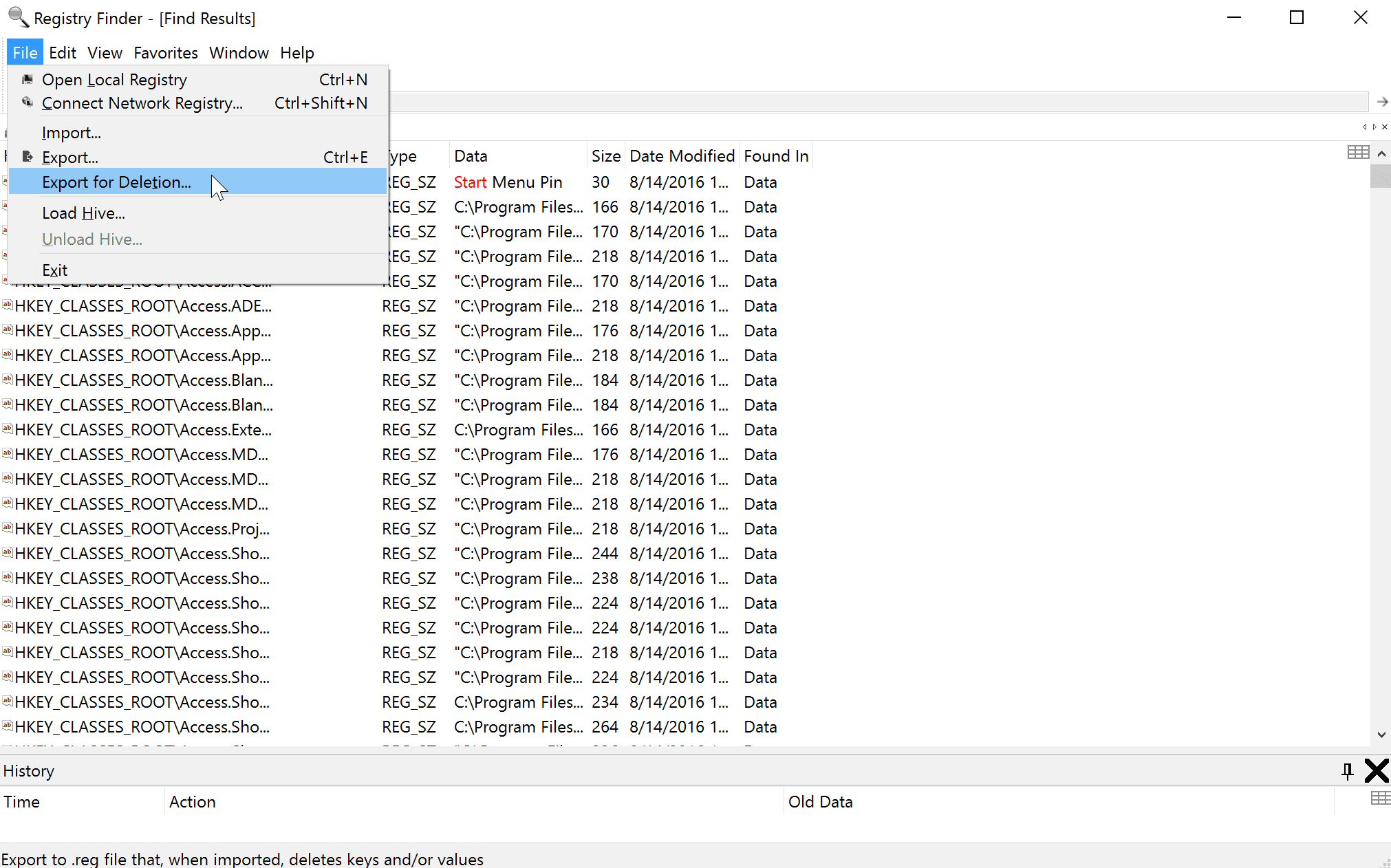Last Updated on February 27, 2017 by Larious
Registry Finder 2.17, the latest version of the handy Registry helper application, ships with an option to export keys for deletion.
While you can work with the basic Registry Editor that ships with the Windows Operating system, it is not the most comfortable of programs for the job. While it offers all the basics that you require, it lacks features such as quick jumping, a search that does not just jump to the next or previous hit, and more.
Microsoft will add a quick jump option when it releases the Windows 10 Creators Update, but that is about it.
Registry Finder is a standalone program that makes working with the Windows Registry more comfortable. It supports quick jumping, tabs, lists all matching values and keys when you search, and ships with powerful import and export options.
You can read our initial review of Registry Finder here.
Table of Contents
Registry Finder 2.17
The new version of Registry Finder, Registry Finder 2.17, does not reinvent the wheel, and that is a good thing. It adds new options to the program however, and some changes as well.
The main feature of the new version is an option to export Registry keys for deletion. Up until now, all you could do was export keys to a Registry file to import them on the same or another version of Windows at a later point in time.
The new delete option does the opposite. When you execute the exported Registry file, all values referenced in it are deleted from the Registry.
This can be useful for deleting keys at times or regularly. All it takes is to click on the file to do so
Veteran users of Registry Finder may notice that Save is no longer available. The author renamed it to Export which offers the same functionality.
Another change affects the program’s Remote Registry support. Registry Finder won’t connect to a Remote Registry until the tab is selected. Tabs remain open during sessions, that is why it is a useful feature as you may not want a connection to a Remote Registry any time you open the program.
Our review of Registry Finder dates back to version 2.8 released in January 2016. The author released several updates in the meantime that add features or make changes to the program.
Here is a short list of important changes:
- Option to search keys modified within a date range.
- Multiple Find results windows.
- Added support for automatic updates.
- Option to start Registry Finder connected to a remote computer.
- Option to copy or paste Registry values and keys through the Windows Clipboard.
- Regular Expressions support in search.
- Option to change the font used by the program.
- Option to open a search result key in a new tab.
Those are just a selection of changes that were implemented in previous releases since our latest review of Registry Finder.
Closing Words
The author of Registry Finder pushes out updates regularly for the application. It is free, a portable version is available, and definitely more comfortable than the default Windows Registry Editor.
Now You: If you edit the Registry, which program do you use for the job?

Author Rating
Software Name
Registry Finder
Operating System
Windows
Software Category
Administration
Landing Page
